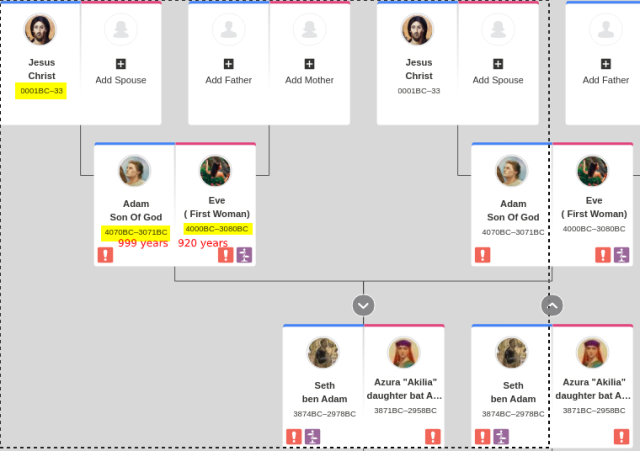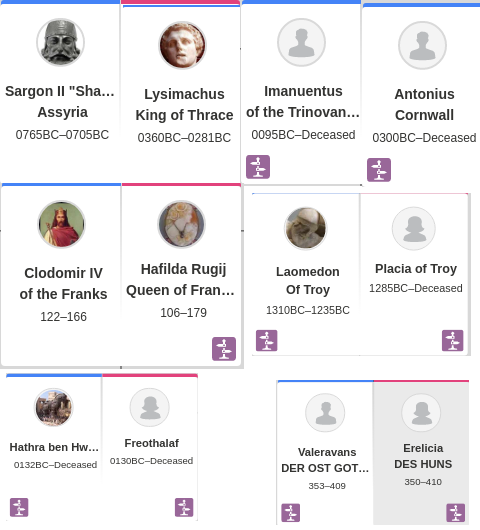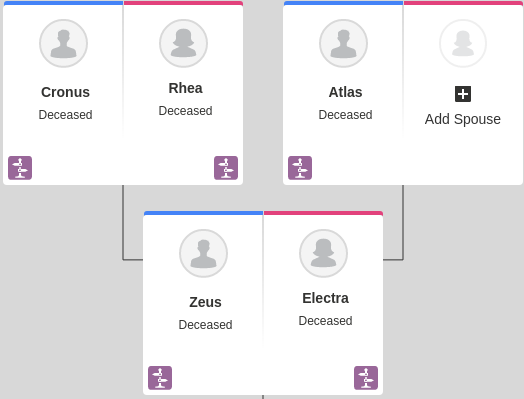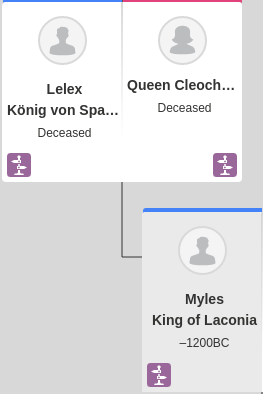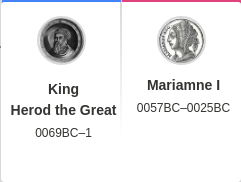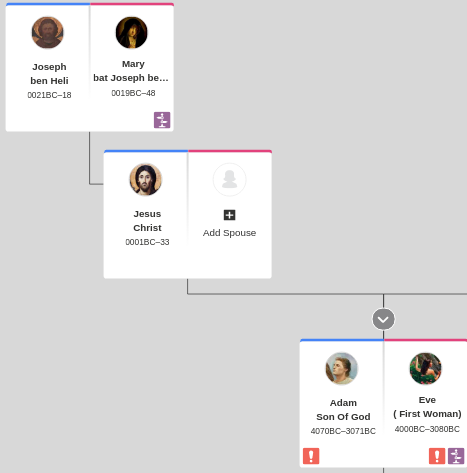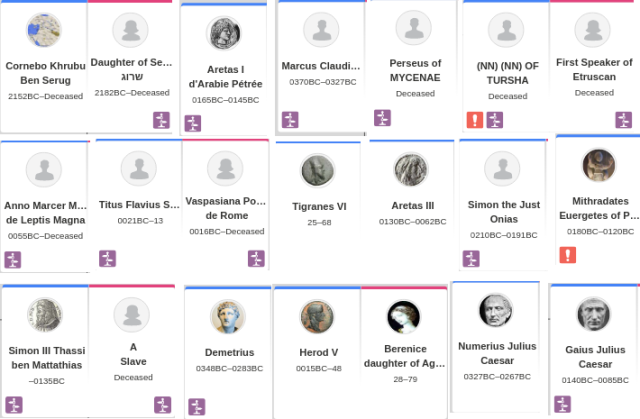First order of business today was to follow handwritten notes, taking me back 21 generations to where I left off. The story starts here.

It’s actually not so bad: lots of links through similar (or identical) names, mostly up the left (paternal) side. Yesterday I had to go back 41 generations.
Following more endless trails into the past, I was struck by a name: Gurguit Barbtruc (Welsh: Gwrgant Farfdrwch) was a legendary king of the Britons as accounted by Geoffrey of Monmouth. He was the son of Belinus and was said to have found a home for the Irish people.
Gurguit was a peaceful king who followed in the manner of his father and grandfather. Yet, when the king of the Danes refused to pay tribute to Belinus’s son, Gurguit took a fleet and invaded Denmark, killing the king and reducing the country to subservience.
On the return voyage, Gurguit came across a fleet of thirty ships of men and women, called Basclenses, under the leadership of Partholoim. They had been exiled from Spain and sought a new land to live in. Gurguit did not allow them to settle in Britain but he gave them the isle of Ireland to settle, which was (according to this fanciful legend) uninhabited until then, and thus the Basclenses became the Irish.
Gurguit died peacefully and was buried in the Caerleon, a city he built up from the time his father founded it. Guithelin succeeded him to the kingship.

And who are these people?
Prasutagus was king of a British Celtic tribe called the Iceni, who inhabited roughly what is now Norfolk, in the 1st century AD. He is best known as the husband of Boudica.
Boudica was a queen of the British Iceni tribe who led an uprising against the conquering forces of the Roman Empire in AD 60 or 61. According to Roman sources, shortly after the uprising failed, she poisoned herself or died of her wounds, although there is no actual evidence of her fate. She is considered a British folk hero. (Wikipedia)

Here she is haranguing the Britons.

These people keep coming up, so I looked into them.
Alaric I was the first king of the Visigoths, from 395 to 410.
Alaric began his career under the Gothic soldier Gainas and later joined the Roman army. Once an ally of Rome under the Emperor Theodosius, Alaric helped defeat the Franks and other allies of a would-be Roman usurper. Despite losing many thousands of his men, he received little recognition from Rome and left the Roman army disappointed. After the death of Theodosius and the disintegration of the Roman armies in 395, he is described as king of the Visigoths. As the leader of the only effective field force remaining in the Balkans, he sought Roman legitimacy, never quite achieving a position acceptable to himself or to the Roman authorities.
He operated mainly against the successive Western Roman regimes, and marched into Italy, where he died. He is responsible for the sack of Rome in 410, one of several notable events in the Western Roman Empire’s eventual decline.
So far, so good. Now see if you spot anything a little, um, strange about her writeup on the same site (familysearch.org):

Nothing to see here. Move along!

Pharamond, also spelled Faramund, is a legendary early king of the Franks, first referred to in the anonymous 8th-century Liber Historiae Francorum, which depicts him as the first king of the Franks (Wikipedia)
When Queen Argotta Justin de Valentina was born about 0376, in Gaul, Roman Empire, her father, Grenobald des Cimbres, was 26 and her mother, Mrs. Genebald, was 18. She had at least 11 sons and 9 daughters with Pharamond King of France. She died in 0438, in her hometown, at the age of 62, and was buried in Gaul, Roman Empire. (familysearch.org)
One cannot help but wonder: did she think her husband was legendary?
What about his second great-grandfather, Malaric 1? Did he think Pharamond was legendary?
When Malaric I King of the Franks at Toxandrie was born in January 0295, in Gaul, Roman Empire, his father, Ragaise de Toxandrie King of the Franks, was 25 and his mother, Eva Blesinde Margolis de Alemanie, was 23. He had at least 3 sons and 1 daughter with Ascyla La Gauloise Hija des Francs. He died in January 0360, in his hometown, at the age of 65, and was buried in Gaul, Roman Empire. (familysearch)

And at last, Russians! Hailing from Veliky Novgorod.

And Grim Shaggy Cheek, the stuff of sagas.
Carrying along, we add Poland and Bohemia (Czech) royalty, including Boleslaus I, The Cruel who, despite killing his older brother in order to become Duke is considered an OK guy, Wikipedia tells us.
Elsewhere it’s fun to watch the names change in four generations (1481-1585): Whitier-Whittier-Whitear-Whytear.

Samuel Wardwell is an interesting find. He was hanged during the Salem Witch Trials after retracting a confession. But were the witch trials faked as part of an agenda? You decide. (Warning: Miles W. Mathis is almost certainly an intelligence operation, so might want to read his initials as Masterful With Misdirection.)
Sarah Hooper has an interesting connection to the Mayflower, which I wrote about about here (amusing now to think I considered that ancient history!).
And the really good news? I’m through with this. For now.
One last note: interesting that my mother’s line ends with her parents, and my father’s mother’s line ends on her mother’s side. But after all this, that’s OK.Honest.






